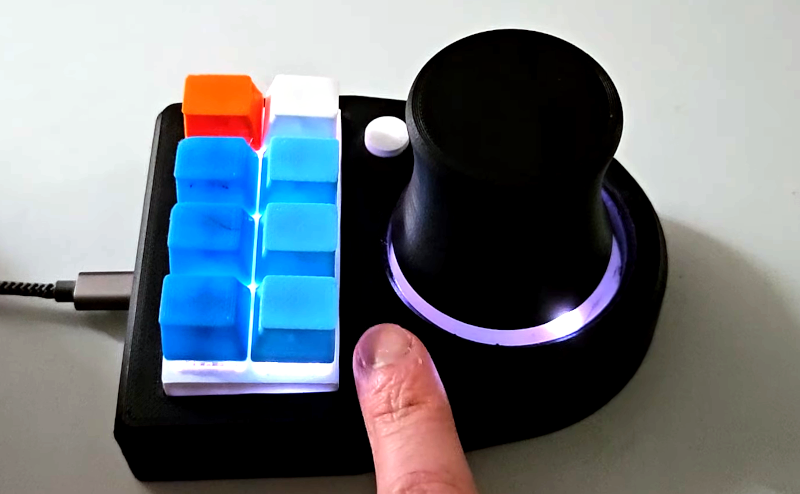If you work with high-end CAD workstations, you may have encountered a SpaceMouse or similar devices. Sort of a mouse with an extra dimension, they aren’t cheap. So [meisterodin1981] decided to build a do-it-yourself version for use with Blender. You can check it out in the video below.
The device uses an MPU6050 accelerometer and a spring. It also has some buttons for special features. The device uses a Teensy 2, although any controller that can provide an HID device could probably do the job. Of course, a nice 3D printed case is part of the design. A printed pair of plates holds a 3D printer bed spring to provide the device’s Z-axis movement. The wires to the encoder are routed through the center of the spring, so neatness counts.
We’ve seen other 3D mice like the Orbion. Your other option is to pick up the old-fashioned serial port versions and convert them. Until you can do your designs in virtual reality, these mice are just the ticket.

















It looks cool, but it seems fussy to use because you’re waiting for automated cursor movement. Wouldn’t a trackball be better?
I think these inputs are liked for the dial integrated *in* the joystick.
Like, the joystick part gives the WASD up/down/left/right input, while the dial adds QE counterclockwise/clockwise input as well.
A trackball does WASD easy, but integrating QE on the ball would seem hard to do that way.
Not sure about this thing.
SpaceNavigators give you 3 axis of motion and 3 of twist.
Defaults are far too sensitive.
The third axis can come from twisting the ball, I would think, as long as it has enough sensors / encoders that you can take the difference to get the rotation.
You need 3D not 2D. Notice he twists the stick to give him that extra dimension movement. Cool beans.
Thanks. The twisting was not super obvious to me.
That’s what the accelerometer is doing? I read that there’s an accelerometer and a rotary encoder. I’m not smart enough to figure out what the accelerometer is being used for.
I don’t know, never tried one. Been CADDing with a trackball forever. Select a point and rotate any direction. Zoom with the scroll wheel. Click and drag up, down, left, right. Right click drop down for other functions. Two extra programmable buttons for common use functions. My hand never moves, just the fingers. What am I missing?
This thing is for your other hand. It eliminates the excessive amount of clicking and re-clicking required to do all the CAD work, as well as navigating around, with a single input device.
How would a trackball do the z-axis motion though? I was thinking you’d almost be able to do a sort one-handed Theremin device with some kind of proximity sensor to let you wave your hand around (and raise and lower it for the z).
X-Y Trackballs with a Z-ring surrounding the ball are standard in controlling 3D picture-positioners on broadcast vision mixer/switchers. They’ve largely replaced X-Y joysticks with a twist Z-axis.
Well a ball can roll forwards, backwards, left, right, or spin clockwise/anticlockwise. I would think that if you have a way to measure all three axes at once (which you probably could, just with one more rotation sensor), you are done. If not, like if you’re using XY optical sensors exclusively and there’s no room to put one exactly perpendicular to the first one, I think you should still be able to measure the difference in the XY motion at two points and infer that there was a twist or not.
A real spacemouse is 6 axis, not 3. It’s difficult to understand how this feels unless you have used one. Roll,pitch,yaw and xyz translation.
These diy projects are cool but unfortunately don’t come close to their patented solution.
I prefer using my left hand for shortcuts personally but everyone has their own preferences.
I had the idea of writing a FreeCAD plugin to connect to a mobile phone and rotate the view according to how the phone is rotated IRL.
I wrote a prototype to try it out with the classic OpenGL cube, and my smartphone over a TCP connection. The results were pretty sweet, the rotation was instantaneous and it felt very natural to rotate the cube by rotating the phone.
Nice! Rotation only, or translation too? Any code to share?